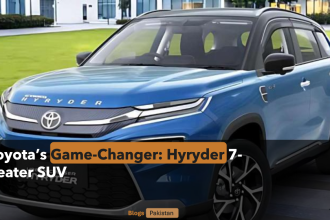Imagine paying premium prices for a vehicle that meets less than 10% of globally accepted safety benchmarks. That’s not a hypothetical scenario – it’s the stark reality for millions of Pakistani drivers. A recent bombshell revelation to the National Assembly’s Standing Committee on Industry and Production laid bare a critical failure: car companies in Pakistan adhere to a mere 18 out of 200 international automotive safety standards.
This alarming gap isn’t just a bureaucratic footnote; it’s a direct threat to lives on Pakistani roads. While consumers pay prices often exceeding international averages, manufacturers and assemblers neglect a staggering 182 critical safety protocols. The committee expressed profound alarm, labeling domestically produced vehicles as fundamentally unsafe and demanding immediate, strict enforcement against non-compliant automakers.
The Safety Deficit: By the Numbers
H2: Only 18 Out of 200 – What Does This Actually Mean?
International safety standards cover everything from crashworthiness and seatbelt integrity to electronic stability control and pedestrian protection. The neglected 182 standards represent vital protections like:
- Advanced Crash Structure Requirements: Ensuring the vehicle cabin remains intact during frontal, side, or rear impacts.
- Mandatory Electronic Stability Control (ESC): Preventing skidding and rollovers, especially crucial on Pakistan’s varied road conditions.
- Pedestrian Impact Protection: Designing hoods and bumpers to minimize injury if a vehicle strikes a person.
- Enhanced Seatbelt and Airbag Systems: Including requirements for pretensioners, load-limiters, and side/curtain airbags beyond the basic two.
- Child Seat Anchor Points (ISOFIX): Standard globally for safely securing child seats.
The committee highlighted a bitter irony: despite this minimal compliance, vehicle prices in Pakistan remain significantly higher than in markets where manufacturers meet full safety expectations. Consumers are paying more for demonstrably less protection.
H2: The Ripple Effect: Exports, Trust, and Accountability
H3: The Export Conundrum
Committee members pointed to a direct consequence of this safety deficit: Pakistan’s inability to compete globally. Neighbors like India and China have become major auto exporters by aligning with international standards. Pakistani-assembled vehicles, however, were deemed “unfit for export” due to substandard safety and quality. This isn’t just a lost economic opportunity; it’s a testament to the industry’s failure to prioritize fundamental engineering integrity.
H3: The Airbag Illusion
Even the most basic safety feature became a point of contention. While the Secretary of Industries stated that two airbags are “standard,” the committee chairman countered that even three major foreign manufacturers operating locally fail to comply with existing domestic regulations. This suggests systemic non-enforcement and raises serious questions about the validity of any claimed safety standards.
H3: Decades of Leniency: Time for Reckoning?
One committee member delivered a scathing indictment, arguing against further leniency for automakers who have operated in Pakistan for decades without aligning with safety norms. The call was clear: companies persistently ignoring safety must face meaningful consequences. This sentiment reflects public frustration over perceived corporate impunity while consumer safety is compromised.
H2: Navigating the Road Ahead: Can Pakistan’s Auto Industry Shift Gears?
The committee’s alarm must translate into concrete action. Here’s what needs to happen:
- Immediate Enforcement of Existing Regulations: Regulatory bodies like the Pakistan Standards and Quality Control Authority (PSQCA) must be empowered and mandated to rigorously enforce at least the minimal local standards currently on the books, including the mandatory fitment and functionality of airbags.
- Phased Adoption of Global Standards: A transparent, time-bound roadmap for adopting critical international standards (like UNECE regulations common in Europe and many Asian countries) is non-negotiable. Prioritize crash safety, ESC, and improved braking systems.
- Transparency and Consumer Awareness: Mandate clear labeling of safety features (and omissions) on all new vehicles. Empower consumers to make informed choices based on safety, not just price or brand loyalty.
- Leveling the Cost-Safety Equation: Government policy must incentivize safety investments while scrutinizing pricing models. The justification for high prices without commensurate safety must be challenged.
- Prioritizing Export Potential: Aligning with global standards isn’t just about safety; it’s the key to unlocking Pakistan’s potential as a competitive auto exporter.
Image Suggestions:
- A split-screen graphic: One side showing a modern car undergoing a rigorous crash test (Euro NCAP style), the other side showing a generic Pakistani-assembled sedan with a question mark over its safety features.
- A clear, labeled diagram highlighting key missing safety features in typical Pakistani cars (e.g., ESC, side airbags, reinforced pillars) versus international standards.
- A graph starkly illustrating the gap: “18 vs 200 – Pakistan’s Auto Safety Compliance Deficit.”
The Final Word: Safety Isn’t Optional
The disclosure to the National Assembly isn’t just a report; it’s a wake-up call. Driving a vehicle meeting only 18 safety standards is akin to navigating treacherous terrain without essential safeguards. The automobile industry in Pakistan stands at a crossroads. Continuing on the path of neglected safety erodes consumer trust, forfeits economic opportunity, and, most critically, endangers lives.
Demanding vehicles that meet global safety benchmarks isn’t asking for luxury; it’s demanding the fundamental right to protection. The committee’s call for strict enforcement must be heeded. The price of inaction, measured in preventable tragedies and lost potential, is simply too high. The wheels of change need to start turning now.










